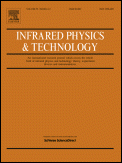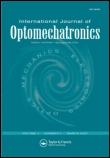
Journal of Biophotonics
metrics 2024
Transforming Science Through the Power of Light
Introduction
Journal of Biophotonics is a prestigious academic journal published by WILEY-V C H VERLAG GMBH in Germany, dedicated to advancing the field of biophotonics through high-quality research. With an ISSN of 1864-063X and an E-ISSN of 1864-0648, this journal is recognized for its contributions within diverse categories, including biochemistry, genetics, molecular biology, chemistry, engineering, materials science, and physics, earning a commendable Q2 ranking in several of these fields as of 2023. The journal aims to bridge the gap between theoretical research and practical applications, fostering interdisciplinary collaboration that is critical for innovations in imaging, diagnostics, and therapeutics. Researchers, professionals, and students alike will find the Journal of Biophotonics invaluable for staying informed about the latest developments and breakthroughs in this dynamic field, making it a cornerstone for knowledge dissemination and scholarly discourse from its inception in 2008 and continuing through 2024.
Metrics 2024
 0.58
0.58 2.00
2.00 2.60
2.60 79
79Metrics History
Rank 2024
Scopus
IF (Web Of Science)
JCI (Web Of Science)
Quartile History
Similar Journals

Optics Continuum
Advancing Knowledge in Optics and PhotonicsOptics Continuum, published by Optica Publishing Group, is a pioneering open access journal dedicated to advancing the field of optics and photonics. Since its inception in 2022, this journal seeks to provide a vital platform for the dissemination of groundbreaking research and innovative developments across several interconnected domains, including electrical and electronic engineering, atomic and molecular physics, and material sciences focused on electronic, optical, and magnetic materials. With impressive rankings in Scopus—placed #384 in Electrical and Electronic Engineering and #109 in Atomic and Molecular Physics—the journal aims to engage a diverse readership comprised of researchers, professionals, and students, promoting collaboration and knowledge exchange. The journal's open access model ensures that cutting-edge research is readily available to all, nurturing an inclusive academic environment. For those interested in staying at the forefront of optics research, Optics Continuum is an essential resource that continuously enriches the global scientific community.

Journal of Optical Microsystems
Exploring the Future of Light-Driven TechnologiesJournal of Optical Microsystems, published by SPIE-SOC PHOTO-OPTICAL INSTRUMENTATION ENGINEERS, is a premier open-access journal dedicated to advancing the field of optical microsystems. With a focus on the intersections of Atomic and Molecular Physics, Electrical Engineering, and Materials Science, this journal has quickly emerged as a key resource since its inception in 2021, currently maintaining a Q2 ranking in multiple relevant categories. Although it is relatively new, its impact within the academic community is reflected in its percentile rankings, positioning it among the top-tier journals. The Journal provides a platform for researchers, professionals, and students to publish and access cutting-edge studies that explore innovative applications of optical technologies. With its commitment to disseminating high-quality research and the growing importance of optics in technology, the Journal of Optical Microsystems plays a critical role in bridging the gap between theoretical advancements and practical applications in the field. Located in the United States, it is poised to connect an international audience eager to contribute to and benefit from developments in optical and electronic materials.

Journal of the European Optical Society-Rapid Publications
Connecting Scholars Through Rapid Optical ResearchJournal of the European Optical Society-Rapid Publications, with ISSN 1990-2573 and published by EDP Sciences S A, is a premier open access journal dedicated to advancing the field of optics and photonics since its inception in 2006. Based in France, this journal serves as a vibrant platform for researchers, professionals, and students to disseminate their findings quickly and efficiently. Achieving a commendable Q3 ranking in Atomic and Molecular Physics and Optics (2023), it reflects a growing impact within the scientific community, despite currently holding a 33rd percentile rank among similar publications in the realm of Physics and Astronomy. The journal fosters an environment of rapid communication and collaboration, making it an invaluable resource for those interested in the latest developments and innovations in optical sciences. With open access ensuring broad visibility for all published work, the Journal of the European Optical Society-Rapid Publications is positioned as a key contributor to enhancing the understanding and application of optical technologies.

INFRARED PHYSICS & TECHNOLOGY
Exploring the Depths of Infrared PhenomenaINFRARED PHYSICS & TECHNOLOGY, published by Elsevier, stands at the forefront of research in the fields of atomic and molecular physics, materials science, and condensed matter physics. With an impressive impact factor reflected in its Q2 quartile ranking across multiple categories, this journal serves as a key platform for disseminating high-quality peer-reviewed articles that advance understanding of infrared phenomena and their applications. As an essential resource from 1994 to 2024, it contributes significantly to the ongoing dialogue within the scientific community, providing researchers, professionals, and students with cutting-edge insights into electronic, optical, and magnetic materials. Although not an open access journal, its articles are widely disseminated and recounted in major databases, ensuring its pivotal role in the advancement of both theoretical and applied physics. Located in the vibrant academic hub of Amsterdam, the journal encourages innovative research that drives multi-disciplinary studies and fosters collaboration among scientists globally.

Photonics Letters of Poland
Illuminating Innovations in PhotonicsPhotonics Letters of Poland is a prominent journal dedicated to the field of photonics, published by the Photonics Society of Poland. With an ISSN of 2080-2242, the journal aims to foster knowledge and innovation within electronic, optical, and magnetic materials. Although it currently holds a Q4 classification in its category and is ranked in the 21st percentile, it serves as an essential platform for researchers and practitioners to share their findings and advancements. The journal covers a range of topics from foundational research to applied science, highlighting advancements in photonics technologies and their applications. Operating from Warsaw University of Technology, the journal promotes open access to knowledge while ensuring rigorous peer review standards. With its coverage spanning from 2009 to 2024, Photonics Letters of Poland represents a vital contribution to ongoing research within the field, making it indispensable for students, professionals, and academics looking to stay attuned to emerging trends and developments in photonics.

Current Optics and Photonics
Pioneering Research at the Intersection of Optics and PhysicsCurrent Optics and Photonics is a premier journal published by the Optical Society Korea, focusing on the dynamic and evolving fields of optics and photonics. With an ISSN of 2508-7266 and E-ISSN 2508-7274, it provides a comprehensive platform for scholarly communication, emphasizing innovations, advances in technology, and theoretical developments in atomic and molecular physics and optics. Situated in South Korea's vibrant academic landscape, this open access journal aims to bridge the gap between theoretical research and practical applications, fostering collaboration and knowledge sharing among researchers, professionals, and students alike. Although currently ranked in the Q3 category for both Atomic and Molecular Physics and Optics, with a Scopus rank of #183/224, it showcases significant contributions that enhance understanding in these critical areas. The journal encourages submission of original research articles, reviews, and technical notes, with the objective of driving forward the conversation in optics and photonics throughout its converged years from 2017 to 2024. Embrace the opportunity to contribute to this expanding field and become part of a community that is at the forefront of scientific discovery.

International Journal of Optomechatronics
Advancing the frontiers of optics and mechanics.The International Journal of Optomechatronics, published by Taylor & Francis Inc, is a leading peer-reviewed journal dedicated to the convergence of optics, mechanics, and electronics. With an ISSN of 1559-9612 and an E-ISSN of 1559-9620, this esteemed journal has been at the forefront of research in Electrical and Electronic Engineering, Instrumentation, and Mechanical Engineering since its inception in 2007. Its exceptional reputation is reflected in its Q1 rankings across multiple categories as of 2023, positioning it among the top-tier journals in the field. As an open access publication since 2017, it encourages wide dissemination of innovative research and technological advancements. With impactful contributions that span applications in robotics, control systems, and advanced manufacturing, the journal serves as a vital resource for researchers, professionals, and students aiming to remain at the cutting edge of optomechatronic science and engineering.

CONCEPTS IN MAGNETIC RESONANCE PART A
Enhancing Understanding of Imaging TechniquesCONCEPTS IN MAGNETIC RESONANCE PART A, an esteemed journal published by Wiley-Hindawi, stands as a pivotal platform in the field of spectroscopy since its inception in 2002. With an Open Access model implemented in 2019, this journal allows for the broad dissemination of research findings, fostering collaboration and innovation among researchers, professionals, and students globally. While it currently holds a quartile ranking of Q4 in Spectroscopy, it aspires to provide a comprehensive collection of original research and review articles that address significant advancements and methodologies in magnetic resonance. Its unique focus invites contributions that enhance understanding and application of imaging techniques, thereby playing a vital role in bridging theoretical concepts to practical applications in chemistry. Boasting an ISSN of 1546-6086 and an E-ISSN of 1552-5023, it continues to encourage the exchange of ideas and data among the scientific community within the United States and beyond, based in the historic Adam House in London.

OPTICS EXPRESS
Fostering Collaboration in Optical AdvancementsOPTICS EXPRESS is a premier peer-reviewed journal published by the Optica Publishing Group, specializing in the rapidly evolving fields of Atomic and Molecular Physics and Optics. With an impressive Q1 ranking in its category and positioned in the 75th percentile among leading journals in Physics and Astronomy, OPTICS EXPRESS serves as a vital platform for disseminating innovative research findings. Since its inception in 1997 and transitioning to Open Access in 1998, the journal has ensured that groundbreaking scientific contributions are accessible to a global audience, fostering collaboration and advancement in optical science. Additionally, with annual publications converging from 1997 to 2024, this journal not only tracks the latest advancements but also shapes the future landscape of optics research. Whether you are a seasoned researcher, a dedicated professional, or a passionate student, OPTICS EXPRESS offers a wealth of knowledge and a commitment to excellence in the optics community.

OPTICS AND SPECTROSCOPY
Fostering Excellence in Optical Science and EngineeringOptics and Spectroscopy is a pivotal peer-reviewed journal published by Pleiades Publishing Inc, focusing on the intricate fields of atomic and molecular physics, as well as optics. Established in 1972, and enjoying a legacy of convergence periods that reinforce its commitment to the evolving landscape of these scientific domains, the journal aims to disseminate high-quality research that advances our understanding of light-matter interactions, electronic materials, and spectroscopic techniques. Despite its current Q4 categorization in both the Atomic and Molecular Physics and Electronic, Optical and Magnetic Materials fields, with corresponding Scopus rankings reflecting its developing influence, the journal remains a valuable resource for researchers and professionals seeking to publish their findings, explore new methodologies, and connect with a community dedicated to innovation in optics. Although there is currently no open access option, the journal's expansive readership and its stability in publication over the decades make it an important platform for both established and emerging researchers in the field.